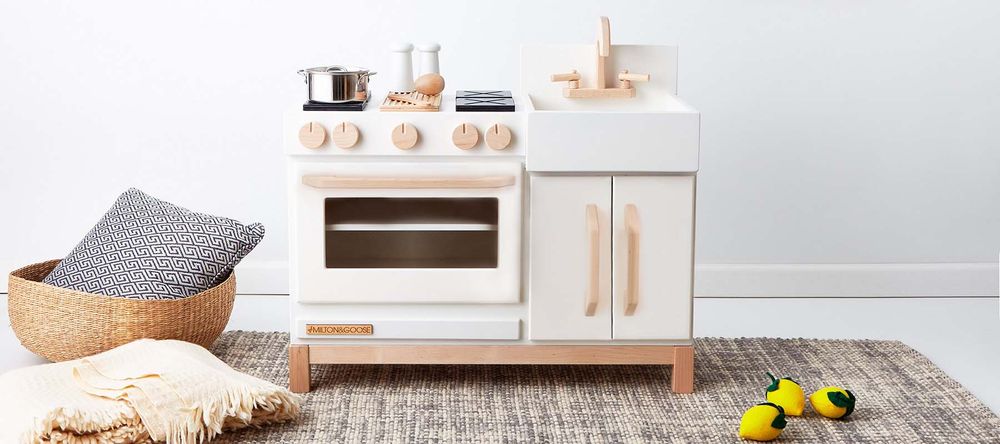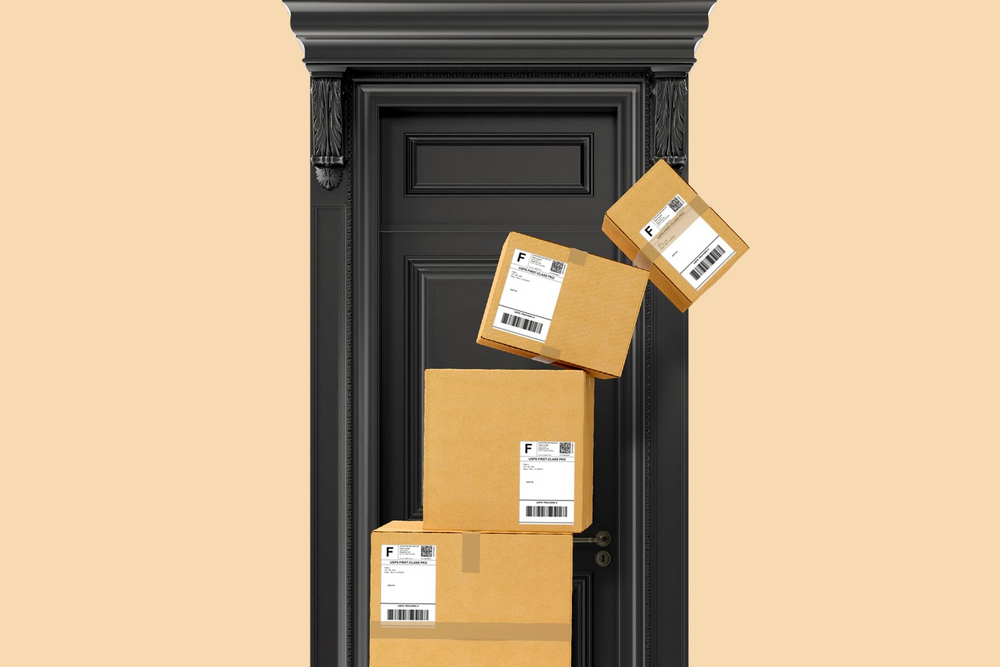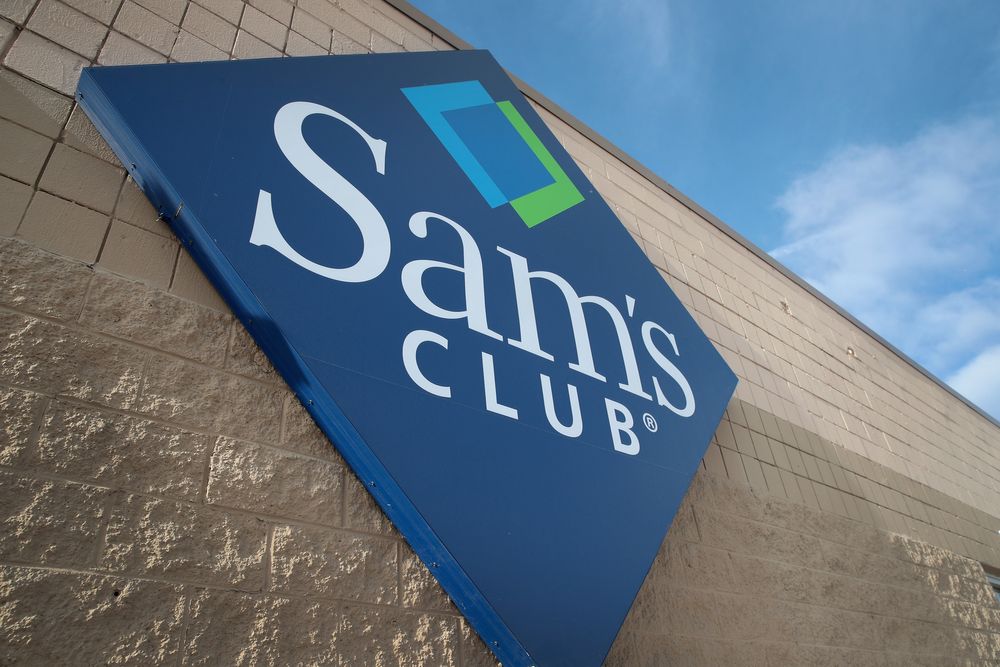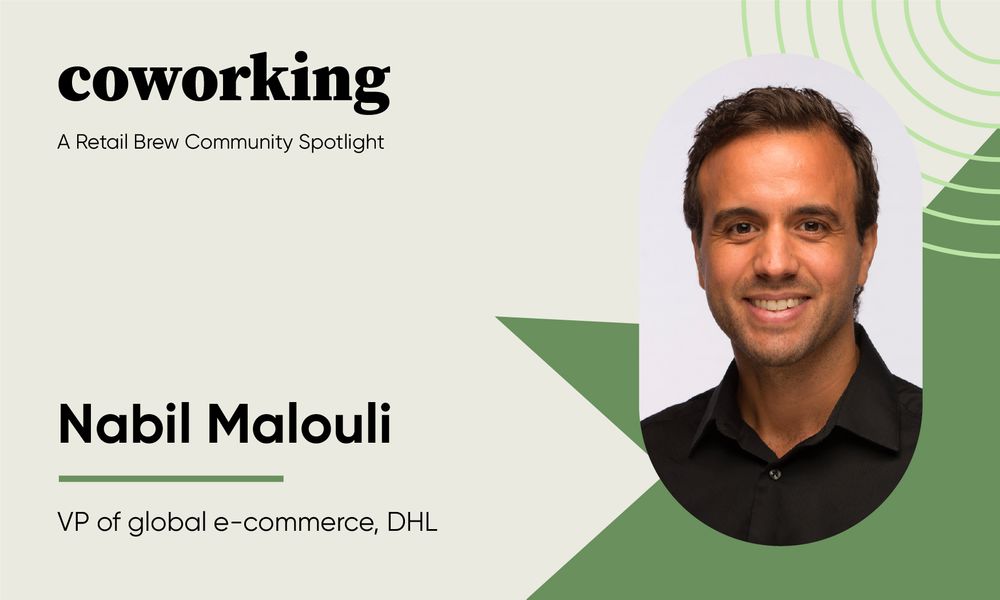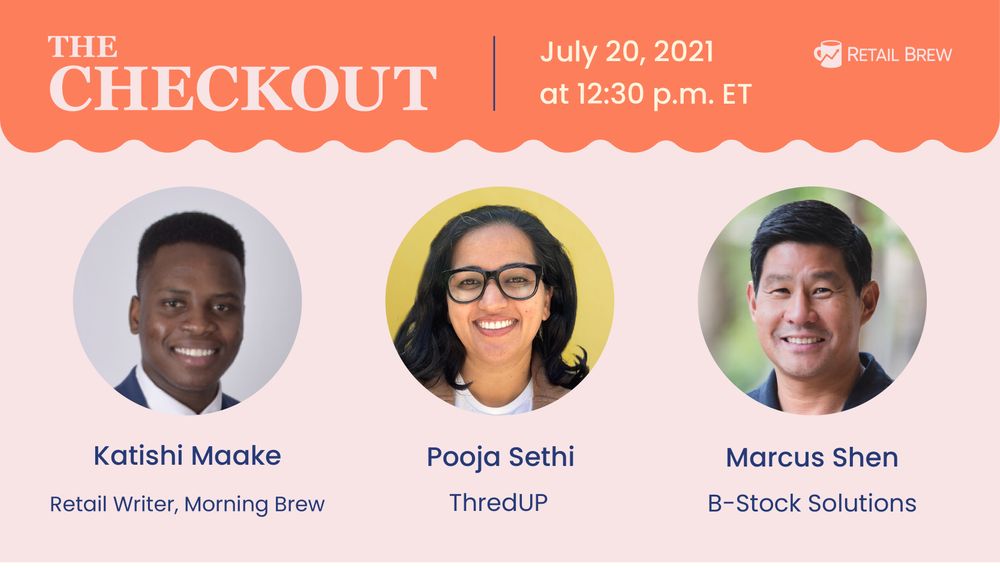|
Welcome back. We hadn’t yet processed that Cup Noodle soft serve exists, and now we're finding out there’s Kraft Mac & Cheese ice cream. Dibs on...well, give us a few days to homebrew a new flavor.
In today’s edition:
- Building a sustainable furniture marketplace
- Peak packaging
- Sam’s Club tests Scan & Ship
—Julia Gray
|
|
|
Courtesy of Model No.
|
Your burger is grass-fed and your jeans are “ethically sourced,” but what about your couch?
Model No., a DTC sustainable furniture startup, is helping build a new category of environmentally friendly retail. Jeffrey McGrew, Vani Khosla, and Jillian Northrup founded the company—which 3D prints items like chairs and tables—in 2018, and it officially opened its online doors last October.
“There’s so much waste in the furniture industry,” CEO Phillip Raub, who joined in June 2020 (and previously cofounded the retail-as-a-service company b8ta), told Retail Brew. “We’re trying to turn the industry on its side.”
-
According to the EPA, more than nine million tons of furniture ended up in landfills in 2018.
Model No. yesterday introduced 10 partner brands to its marketplace to offer customers a one-stop shop for sustainable home goods.
The new additions were vetted and curated to fill in Model No.’s gaps. For example, the company didn’t offer tableware or glassware before linking up with brands like Liberty Tabletop and Neutrall.
- Other partners make everything from candles and ceramics to laundry products.
- “We’re partnering with companies that have a similar ethos and mission,” Raub said.
What’s in a mission? Good question. Model No. uses “additive manufacturing,” which means the furniture is made via 3D printing using food and plant waste and upcycled materials. The wood is sustainably farmed or reclaimed, while metals and other materials are recycled or regenerated products.
The company operates one micro-factory in Oakland, California, and has plans to grow its footprint (not the carbon kind). “Our long term goal is to source and produce locally,” Raub added. “My hope is that...anytime an order comes in, we can produce something within about a hundred, 150 miles of the end user.” For now, Model No. delivers across the country.
- When selecting its brand partners, a US location was top priority.
- “We don't want to then have to put [furniture] on a truck and then ship it all over because that’s placing a large burden on carbon emissions.”
Raub and his team also focused on potential partners’ materials. Milton & Goose, for instance, offers nontoxic wooden toys as an alternative to all the plastic and petroleum-based children’s toys on the market.
Refreshed strategy: Raub’s advice for sustainable-aspiring companies? It’s not just about materials.
-
“The problem is, if you're still producing the vast majority of everything you do offshore...the problems are happening, from a carbon emissions perspective, through transportation.”—JG
|
|
|
|
Mo’ money, mo’ boxes. During the pandemic, as online ordering and delivery surged, the demand for cardboard boxes and packaging materials piled up. Now we know how high.
A record 407 billion square feet of corrugated materials were produced in the US in 2020, according to a study by commercial real estate advisory firm Newmark.
-
The packaging industry is expected to grow by 3.5% each year for the next five years, while eMarketer predicts e-comm sales will grow 13.7% in 2021, to $908+ billion.
- More than 80% of online orders use corrugated packaging.
- “E-commerce uses seven times more boxes per dollar of retail sales than an equivalent purchase at a brick-and-mortar establishment,” Mark Russo, associate director of New Jersey research and national industrial for Newmark, told Retail Brew.
Outside the box: Packaging companies have grown their warehouses and distribution operations accordingly.
- Over the past five years, leasing volume within the packaging industry has been 45% higher than the 20-year average, Newmark found.
What’s at risk? “Greater costs, more inefficiency,” Lisa DeNight, director of national industrial research at Newmark, told us. “The price of packaging materials has risen with surging demand, [which] has also led to supply chain volatility.”—JG
|
|
|
|
Classically trained marketing scholar: “The only way to build a successful business is to build the top of the funnel.”
Klaviyo: “Au contraire, mon frère!” (Give us a break, it’s Bastille Day.)
Thanks to changing consumer privacy laws, customer acquisition is only going to become 10X harder as advertisers lose access to third-party data. So what’s a retailer to do?
According to Klaviyo, you gotta flip the funnel. Build your business from the bottom up. In this way, you’re collecting (what Klaviyo likes to call) customer-first data from your users, nurturing those relationships, being authentic with your brand, and building a sustainable base of business.
The old retail marketing rules are headed for the same trash can as cookies.
Read up on how your brand can succeed in a cookieless world here.
|
|
|
Scott Olson/Getty Images
|
If freedom is shopping bagless, Sam’s Club said “Let freedom ring.” The company announced it’s testing Scan & Ship, a new feature that lets customers use their phone to buy in store and have purchases shipped to their door. Suddenly, a year’s supply of cereal sounds reasonable…
Scan & Ship will be incorporated into Sam’s Club’s existing Scan & Go self-checkout app, which it launched in 2016.
- Scan & Ship is being tested in three stores, and shipping is free for Sam’s Club Plus members.
-
In 2020, 9.6 million customers downloaded the Scan & Go app.
Tech talk: Sam’s Club has been leaning into tech to better engage with customers (and compete with Costco) over the past couple years.
-
In 2020, Sam’s Club expanded online order and curbside pickup options.
-
The year before, the company launched Ask Sam, an in-app tool that helps employees find items and access other Sam’s Club info.
“We want to make sure that we’re providing convenience to our members,” CEO Kath McLay told CNBC. “What we really learned through the pandemic was that we need to stay true to that strategy.”
It’s working: Comparable sales and e-commerce sales at Sam’s Club grew 7.2% and 47% over the past year, surpassing its parent company, Walmart.
-
Sam’s Club’s total membership count reached a record high in Q1 2021.—JG
|
|
-
Oatly was accused of overstating revenue and greenwashing data.
-
Apple is reportedly planning its own buy now, pay later product.
-
Consumer prices soared 5.4% YoY in June, their biggest jump in 13 years.
-
Panda Express will offer plant-based orange chicken, courtesy of Beyond Meat, in select locations.
-
Qurate, the parent company of QVC and HSN, announced a new CEO.
|
|
|
|
Digital experience is the new storefront. Is yours missing something? In order to compete in this rapidly shifting industry, you must master your data to provide top-notch digital experiences. This playbook from Lexer, a leading Customer Data Platform, explains how to finesse your digital customer engagement, from growing your email database to mitigating the cost of returns. Click here to see five strategies in action.
|
|
|
Today’s top retail reads.
Ready Player One: Gaming isn't just for middle-schoolers—luxury brands want to play too. (Washington Post)
Lesson learned: Popeyes plans to debut its own chicken nuggets, and it’s making sure it’s got enough to go around this time. (Bloomberg)
Join the club: DTC brands are trading focus groups for online communities of insiders. (Glossy)
|
|
|
|
On Wednesdays, we wear pink spotlight Retail Brew's readers. Want to be featured in an upcoming edition? Click here to introduce yourself.
Most people don’t pay attention to how their packages show up outside their door. But for Nabil Malouli, VP of global e-commerce at DHL, that’s his entire day.
How would you describe your job to someone who doesn't work in retail? Once you push the “Buy” button, I handle everything that gets your product to your home.
What's one thing we can’t guess about your job from your LinkedIn profile? My days usually start with working on our Asian projects and end up in the Americas after a couple of hours with our European colleagues.
What's your favorite project you've worked on? Designing the e-commerce logistics network for one of the world’s largest sportswear equipment companies. I could clearly see how logistics were able to impact the success of that company in their transition online.
Which emerging retail trend are you most excited about this year, and why? Social commerce. We saw multiple social networks invest in e-commerce—Facebook, Pinterest, and Snap, to name a few—and they clearly see this becoming a key growth area for their business models.
|
|
|
|
We’re a few days away from Retail Brew’s The Checkout event with ThredUp’s SVP and GM of Resale-as-a-Service, Pooja Sethi, and B-Stock’s COO, Marcus Shen. If you haven’t completed your (free) registration for next week’s panel on Tuesday, July 20, at 12:30pm ET, maybe you should? Especially if:
- You want to learn how the pandemic boosted the resale industry.
- You want to know how resale can support sustainability efforts.
RSVP right here to guarantee your spot.
|
|
|
Catch up on the Retail Brew stories you may have missed.
|
|
|
Enjoying the newsletter? Share it with your network to take advantage of our rewards program.
When you reach 3 referrals, you'll be invited to Monthly Exclusive Events with our co-founder Alex and the biggest names in business.

Hit the button below to learn more and access your rewards hub.
Click to ShareOr copy & paste your referral link to others:
morningbrew.com/retail/r/?kid=303a04a9
|
|
|
Written by
Glenda Toma and Julia Gray
Illustrations & graphics by
Francis Scialabba
Was this email forwarded to you? Sign up here.
|
ADVERTISE // CAREERS // SHOP // FAQ
Update your email preferences or unsubscribe here.
View our privacy policy here.
Copyright © 2021 Morning Brew. All rights reserved.
22 W 19th St, 8th Floor, New York, NY 10011
|
|




